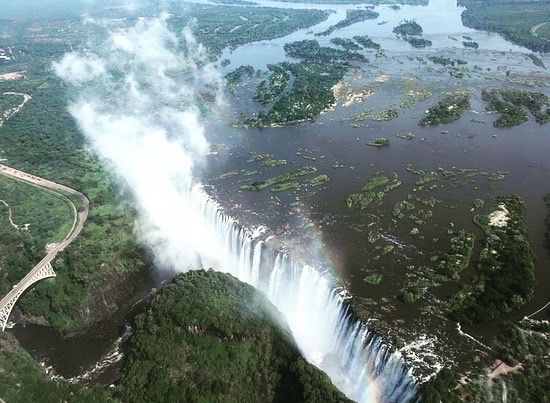It’s spring in Victoria Falls and the vast African plains are full of life. Contrary to the images of drought published at the end of 2019, the December rains have worked their magic and the Zambezi National Park is lush and green, teeming with the sounds of the Zimbabwean bush. As I sit on the deck at Victoria Falls Safari Club on the final day of my trip, I am lucky enough to witness an electric storm slashing the enormous skies, and the heavens open. Warm rain drops beat the earth and it smells of spring.
The landscapes in Zimbabwe are like nothing I’ve ever seen. The fast-flowing Zambezi River is the source of the majestic Victoria Falls – one of the Seven Wonders of the Natural World. At 108m tall, the waterfall sinks into what feels like an enormous plug hole, water swirling and steaming rising; it’s nature’s bath tub. Locally known as ‘Mosi-oa Tunya’ meaning ‘The Smoke that Thunders’ in the local Tonga language, the mist rising from the Falls looks like the landscape is on fire.
As a linguist, I am much struck by the rhythmic languages spoken in Zimbabwe, and how these rhythms translate into traditional music and dance. On my final night, I experienced Africa Albida Tourism’s traditional Zimbabwean feast, The Boma, where we were treated to a live interactive drumming show and we could feel the vibrations of Africa at our finger tips.
Victoria Falls is a truly sensory experience – the sights and sounds of wildlife, the feel of the waterfall’s mist on your face, the rhythm of the African drums, the smell of the earth as the rainfalls start – a taste of Africa.


